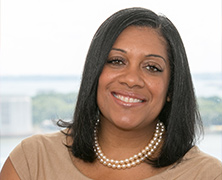It’s Time to Take Our Seats at the (Board) Table
My career journey has taught me that diverse companies, teams, management and, most importantly, corporate boards do not just happen by accident. It takes smart and courageous leaders taking deliberate steps to create inclusive workplaces and cultures where all employees feel a sense of belonging.
I have also learned that boards impact almost every aspect of our lives. Board decisions help determine the cars we drive, the food we eat, where we shop, what medicine we take, and what we wear; and they make larger decisions about the environment, which plants stay open, and who gets to keep their jobs.
While women control 73 percent of household spending and are 50 percent of the U.S. population, very few women sit on the boards of the most powerful companies. Women only hold about 20 percent of S&P 500 board seats. Even more troubling is that in nearly a decade the number of women in senior roles in the United States increased by only one percentage point, and less than five percent of executive/ senior-level positions in the S&P 500 are held by women of color.
With progress to parity stalling at all levels—particularly for women of color, who are nearly invisible in the boardroom—I decided early in my career to boldly and unapologetically serve as a voice of the voiceless to make board diversity a discussion from the classroom to the boardroom. In my daily interactions with influential experts, I try to dispel the myth that qualified, board-ready women, including women of color, are hard to find. I take this approach because board diversity is not just about fairness. The presence of women and women of color on boards has been shown to enhance problem-solving, drive innovation, spur competitiveness, and position companies to win the markets of the future.
Where I have landed professionally is no surprise to me—I demonstrated leadership skills from an early age. Most of my life has been spent working to overcome bias and microaggressions, which are part of the everyday experiences of many women of color. But rather than accept other people’s beliefs that I do not belong, I now realize that in order to reach my full potential, I have to push the doors open, walk into the room, and confidently have a seat at the table.







